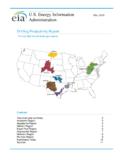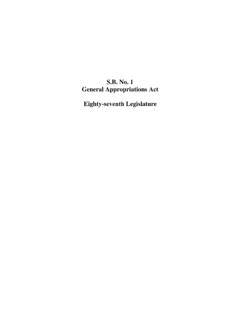Transcription of KASAYSAYAN AT KULTURA NG PILIPINAS (PHILIPPINE …
1 KASAYSAYAN AT KULTURA NG PILIPINAS . ( philippine HISTORY AND CULTURE). Soc Sci 16. 2006 edition Ang KASAYSAYAN [at KULTURA ng PILIPINAS ] ay SALAYSAY hinggil sa nakaraan o nakalipas na may SAYSAY kahulugan, katuturan, at kabuluhan sa SARILING LIPUNAN at KULTURA o kabuuang kinabibilangan. Ito ay iniuulat gamit ang mga konsepto at kategorya ng sariling KULTURA . ZEUS A. SALAZAR. Outlined and Compiled by: MR. TECAH C. SAGANDOY. Instructor, BSU-CAS-SSD. (For Private Use Only). COURSE OUTLINE FOR philippine HISTORY. LESSON ONE: Land and People 1. Introduction 2. Geographical Setting 3. The Filipino People: Common and Regional Traits LESSON TWO: Early Filipinos their environment and culture during the Stone Ages 1. Paleolithic and Neolithic cultures 2.
2 Cagayan Man and Tabon Man Their environment and culture 3. Pottery, weaving and the appearance of metals LESSON THREE: Early philippine Culture 1. Philippines and the Cultural Traditions of Asia Indianization of Southeast Asia Early Chinese influences in the Philippines Islamization of the Philippines 2. Political life of the early Filipinos Baranganic System The Datu and Sultan Judicial Processes 3. Economic life of the early Filipinos Ecological niches: their implications to the socio-economic life of the early Filipinos Boat-building industry 4. Socio-cultural life of the early Filipinos Social Stratification Clothing and ornaments Writing, literature and time keeping Marriage customs Religious beliefs Reading: The Pre-colonial Filipina LESSON FOUR: The Filipino Communities and the Spanish Colonial System 1.
3 Coming of the Spaniards 2. The Spanish Colonial Administration 3. Reduccion and the Colonial Landscape Reading: The Colonial Townscape 4. Spanish economic institutions: their oppressive impacts 5. Social transformations under the Spanish regime Reading: Pamana ng Simbahang Pilipino The Colonial Filipinas LESSON FIVE: Reactions to Spanish Colonialism Revolts, Resistance, Reform and Revolution Weaving of national consciousness 1. Filipino Revolts and resistance against Spanish domination 2. philippine Nationalism The Propaganda Movement philippine Revolution philippine -American War: Defending philippine Independence LESSON SIX: Political Development in the Philippines during the American Occupation 1. America's Benevolent Assimilation and their Manifest Destiny 2.
4 Filipinization Policy: Its implications to Filipino political participation philippine Bill of 1902. philippine Assembly of 1907. Jones Law of 1916 and the philippine Senate Campaign for philippine Independence (1919-1935). The Commonwealth Republic 3. Socio-economic transformations and the Americanization of the Filipinos LESSON SEVEN: Philippines under attack WW II and Japanese Imperialism 1. Brief history of WW II: philippine Setting Reading: Day of Valor 2. Japanese Occupation 3. Political, Economic, and Social Conditions LESSON EIGHT: Independence and Nationhood; Authoritarianism and the EDSA. Revolution 1. Independence and The Third philippine Republic Roxas Administration Quirino Administration Magsaysay Administration Garcia Administration Macapagal Administration Marcos Administration 2.
5 Authoritarianism and Martial Law Reading: Martial Law 3. Aquino Administration Reading: The EDSA Revolution 4. Ramos Administration 5. Estrada Administration 6. Arroyo Administration LESSON ONE: Land and People A. GEOGRAPHICAL SETTING. A Visayan myth narrates that, in the beginning, the world was made up of water and the heavens. A bird named Manaul was getting tired of flying that it searched for a resting place. Manaul called on the gods Kaptan, god of the sea; and, Magauayan, god of the air to come to his aid. The gods battled it out trying to outfight each other for the right to help the bird. Kaptan sent winds and that created tidal waves and storms. Magauayan whirlwinds threw back Kaptan's waves, creating land in the process. For thousands of years, they fought until Manaul got tired of their quarrel.
6 Landing on one of the mountains created by the battle, the bird gathered rocks and dropped them on the two gods thereby ending the fight. These masses of rocks the mythical bird have thrown became the many islands that now form the philippine Archipelago (Punongbayan, 1998). The preceding myth sheds light to this question: How did the philippine archipelago emerge? The same question have confronted geologists for so long, so that in the quest for unraveling the processes that shaped the earth that we have today, these geologists have formulated theories that could probably enlighten our minds of a how certain place, an archipelago like the Philippines for example, has taken its present shape, size and topography. Two major theories explain the origin of the Philippines: Pacific and Asiatic Theory.
7 Pacific theory contends that a study of the nature of the rocks beneath the ocean and the volcanic character of the archipelago made Dr. Bailey Willis conclude that the Philippines was formed through the marginal and peripheral eruptions of the Pacific basin . The eruptions of the submarine volcanoes during the remote geologic past and the piling up of their extrusives caused the emergence of the islands above the sea, giving rise to the philippine Archipelago (Salita, 1997). Asiatic, on the other hand, holds view that the Philippines was once a part of the continental shelf of Asia. Dr. Leopoldo Faustino (1928) stated that: The present land areas of the Philippines are merely the higher portions of a partly submerged mountain mass The outline of the Archipelago was first marked at the close of the Paleozoic Era during the Permian Revolution when a movement of the Asiatic land mass to the south caused the China Sea depression and crumpled the edge of the continental platform.
8 In other words the philippine Islands formed the barrier that separated the waters of the Pacific Ocean from the waters of the present China Sea. The present landforms of the Philippines have come about through the complex process of diastrophism, vulcanism and gradation. These landforms are very much interrelated with the origin of the Archipelago itself. The occurrence of tectonic earthquake is an effect of diastrophism. The formation of elongated mountains such as the Sierra Madre and the Cordillera is caused by diastrophism while the conical peaks are the result of vulcanism. Mt. Apo, Mayon Volcano and Kanlaon Volcano are examples of volcanic mountains. The erosion of the highlands and the consequent deposition of the sediments at the oceanic basin comprise the process of gradation.
9 It is gradation that generally causes the formation of minor landforms, such as rivers, valleys, lakes, deltas, hills, rapids, and falls. The deltas formed by Pasig River and Pampanga River as they enter Manila Bay are the results of gradation process (Salita, 1997). 1. The location of Philippines on the western margin of the Pacific Ocean, which is comparatively unstable segment of the earth's crust, may help explain the pattern of landform development. The entire margin of the Pacific basin from Japan to Taiwan, Philippines, Indonesia, and New Zealand owes much of its development to the action of the forces of folding, faulting, and volcanic activity. Geologists call this region as the girdle of fire or ring of fire because it is a region of frequent volcanic activity (Salita, 1997).
10 The geologic processes aforementioned resulted to the Philippines as an inverted Y-shaped archipelago consisting of more than 7,000 islands and islets. These islands are commonly grouped into three major divisions namely: Luzon; Visayas; and Mindanao. Its land surface is crisscrossed by mountains and drained by small river systems. The combined land and water areas of the Philippines are about 1,800,000 km2 of which the water areas comprise about five times the land area. The total land area of the Philippines, excluding Sabah, is 300,000 km2 or 30,000,000 hectares. It is about the size of Italy, slightly larger than the size of United Kingdom, but slightly smaller than Japan. (Salita, 1997). *Boundaries: Being an archipelago, Philippines is bounded by bodies of water: Bashi Channel on the North; Pacific Ocean on the East; South China Sea on the West; and, Celebes Sea on the South.




